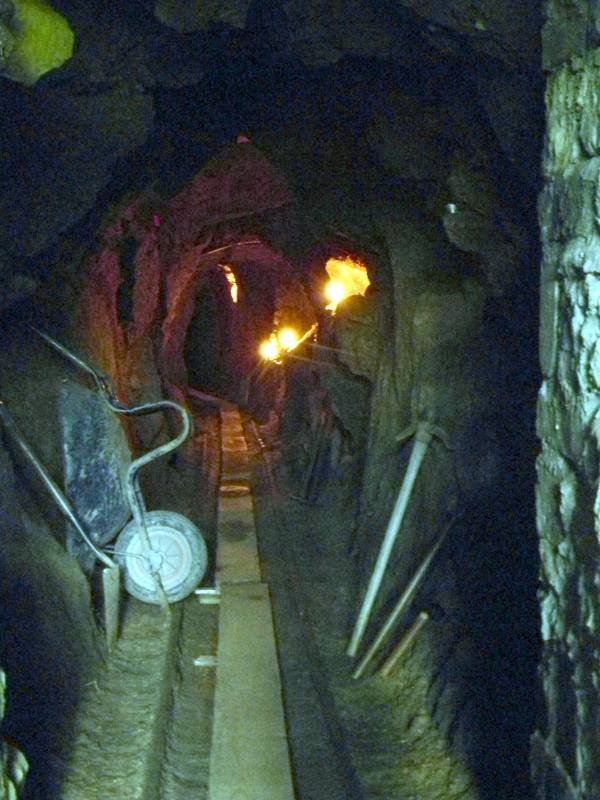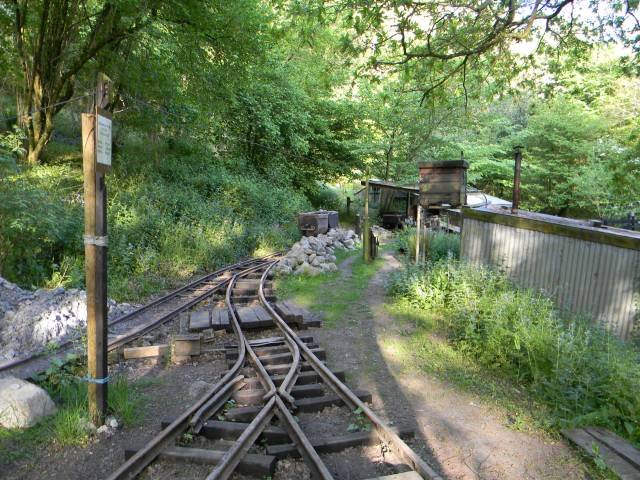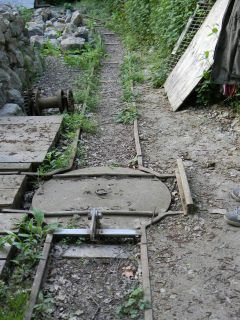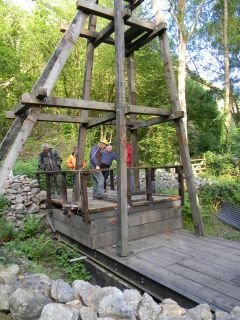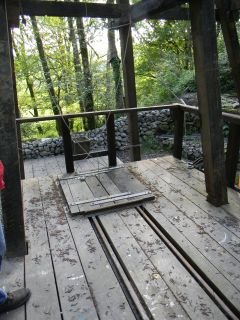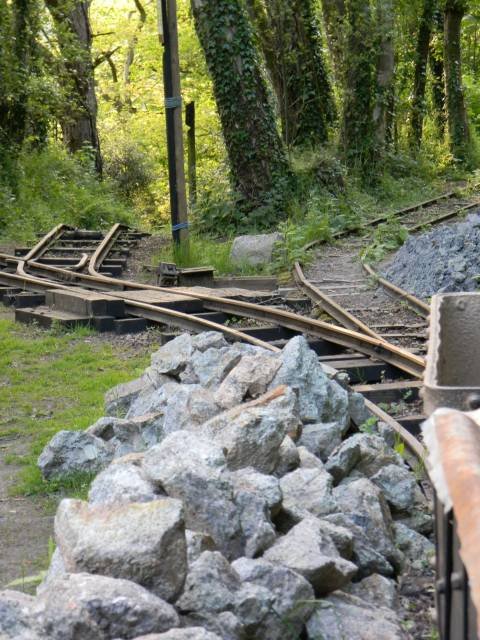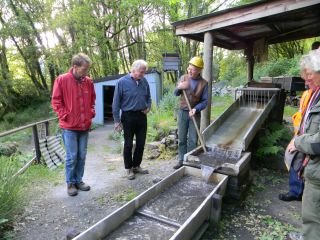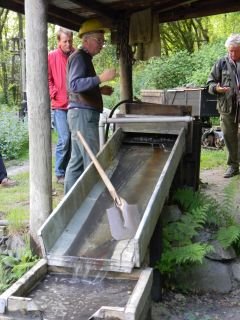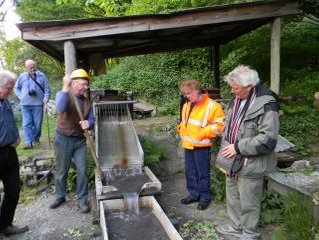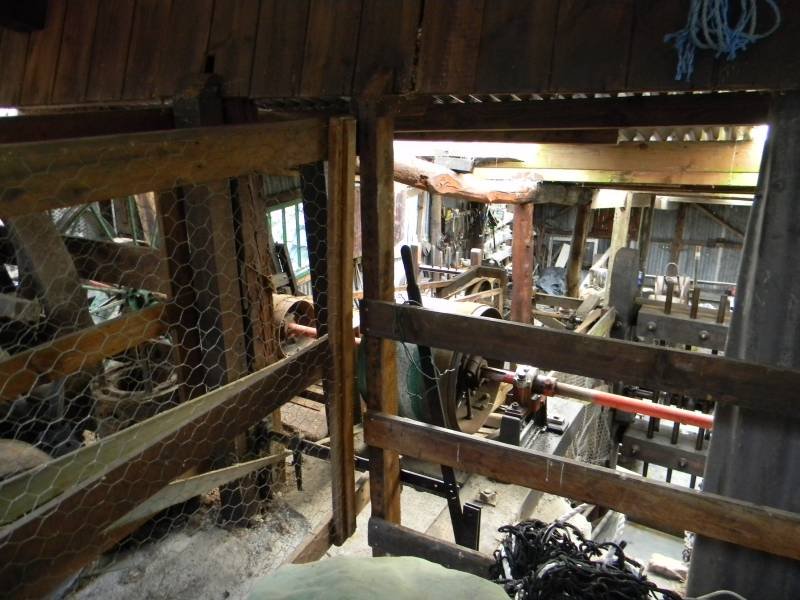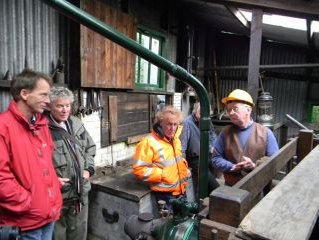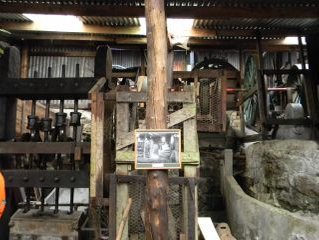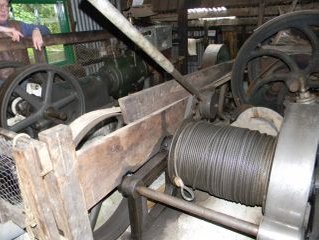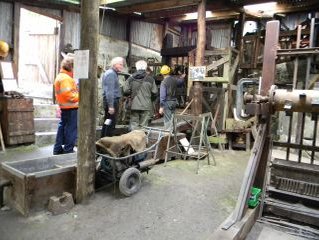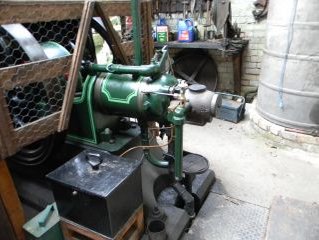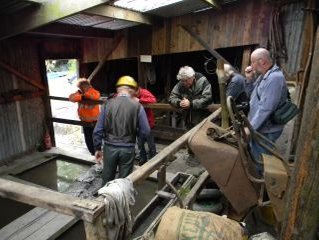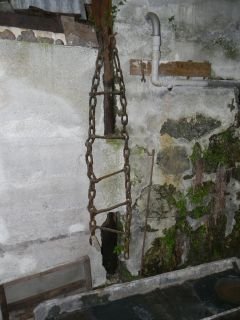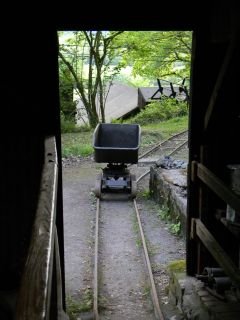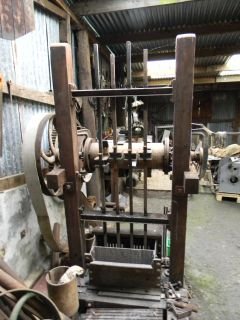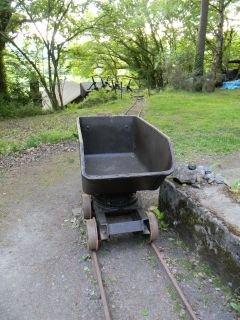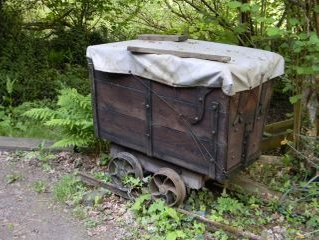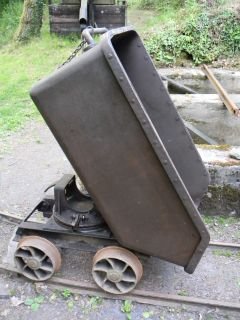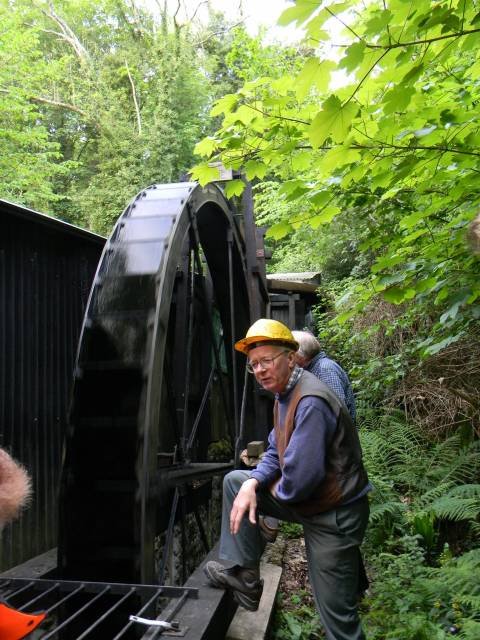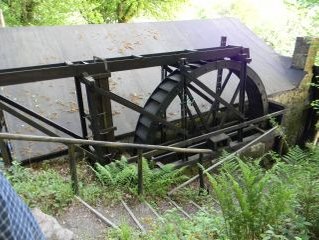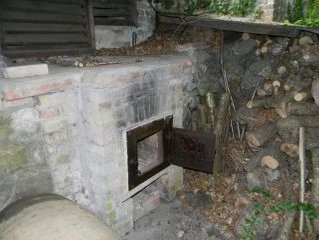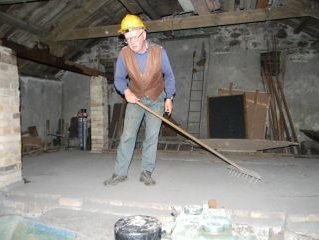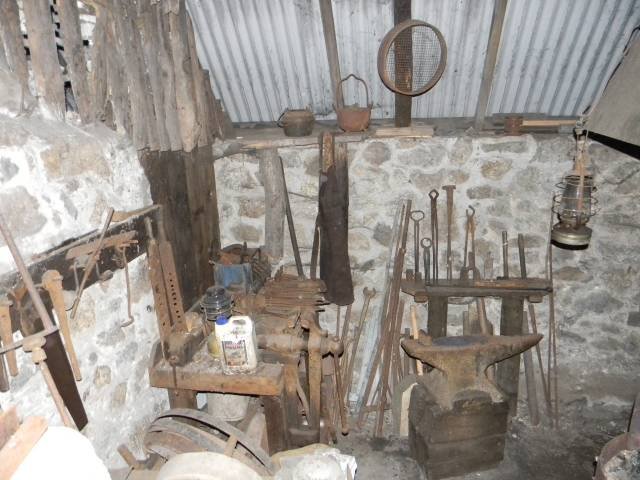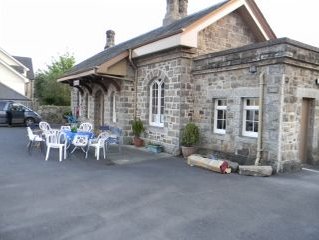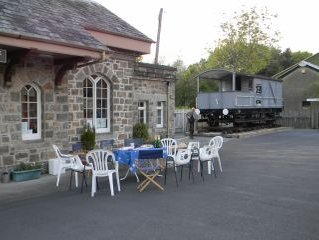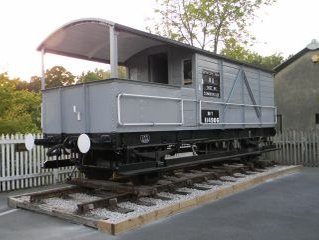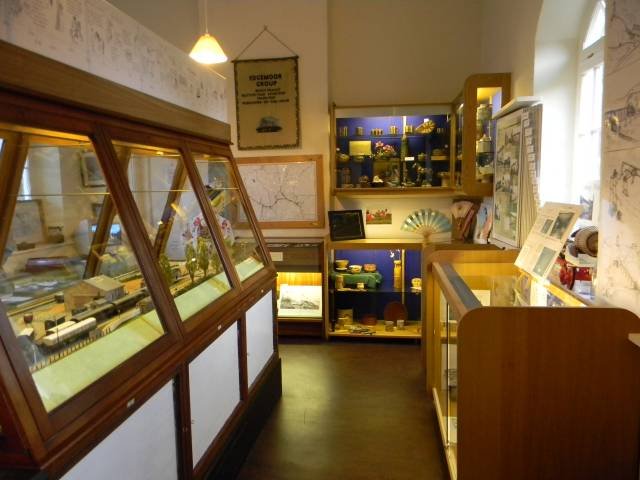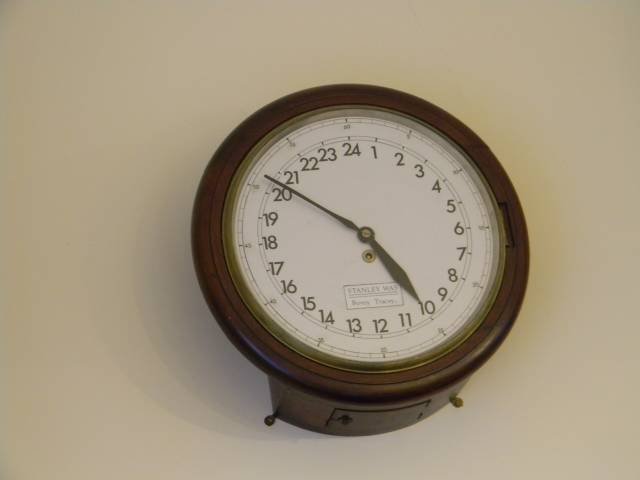Kelly Mine near Bovey Tracey
The first reference to workings at Kelly dates from 1797, when the landowner, George Wills, leased to John Pinsent for 21 years a 'certain mine of black lead or some other substance'. The black lead was, in reality, micaceous haematite, an oxide of iron, which had a variety of uses.
The first official record of the mine is in 1877 when it was leased by the Kelly Iron Company with Captain W. H. Hosking in charge. For the next 13 years only two or three men were employed, production averaging some 25 tons per year. In 1892 the mine was advertised for let by J. Dadd of Kelly and was stated to "contain several valuable lodes and to be equipped with a waterwheel and stamps for ore-dressing".
Up to 1900 the mine appears to have remained idle, until the Scottish Silvoid Company of Glasgow took over the lease with Mr. A.W. Govan as manager and Mr. Samuel Hill as mine captain. In 1901 thirteen men were working at Kelly, probably mainly engaged in development work as production in that year was only 20 tons. From then on output steadily increased, reaching a peak of 202 tons in 1907 in which year the photograph at the top of the page was taken of the Kelly miners standing in front of the shaft.
http://www.kellymine.co.uk/index.html
Micaceous haematite ore occurs in near-vertical fissures or lodes, ranging from a few inches to a few feet wide. Generally though, the productive lodes were about a foot wide. Shallow pits were dug to prove the locations of the lodes. Once found, adits were driven into the hillside following the lode. The ore is very soft and the miners would first rake out all the material in sight from the lode above them, generally for two metres or so, a method known as 'hulklng'. This was the highest grade of ore. Then vertical holes would be drilled, filled with dynamite, and blasted. This would expose the valuable ore once again and the sequence would be repeated. The rock blasted out contained small quantities of low grade ore, and required crushing. The area of extraction was known as a stope, and the method of drilling and blasting in an upward direction termed overhand stoping.
This is the typical mining method employed in the mines of the Wray valley. It is simple and relatively cheap as there are no pumping costs involved; the groundwater simply flows out of the mine through the adits. Removal of the ore from the mine required nothing more sophisticated than hand-powered trams on light 18" gauge railway track.
Kelly Mine worked the deposits of ore on three levels from adits, although there are older workings than records document. In the early 1900s the shaft shown on the plan was used. Shaft working is fairly unusual for 'Shiny Ore' mines since, if the shaft extends below the lowest adit, this type of working is not self-draining and incurs the added expense of pumping.
Mined ore was passed down through the levels to the bottom adit or Main Tramming Level, where it was loaded into wagons and pushed out of the adit. The wagons were then pulled up the inclined tramway using the winch located in the Machine Shed.
Bovey Tracy Heritage Centre
The Bovey Tracey Heritage Centre is situated off the A382 in the Old Bovey Station building, which was in use for rail passenger traffic for nearly 100 years. Also on site is a brake van of the type used on the Great Western Railway and a internationally significant pottery kiln from the 18th Century.
Whether you are interested in family history, local pottery, or the history of mining and quarrying in the area, or following the route of the old railway, there is something for everyone at the Heritage Centre.
Model of Bovey Tracey Railway Model
There are two 00 gauge models of stations on display. There is a model of Bovey Station as it was just before the Moretonhampstead line was closed; it is in the main room of the original station building. There is also a model of the line's terminus at Moretonhampstead Station, at about the same time. This is housed in the GWR Toad brake van No 114906 which is on display in the station forecourt. Access to the brake van is by request at present and depends on the availability of staff.
